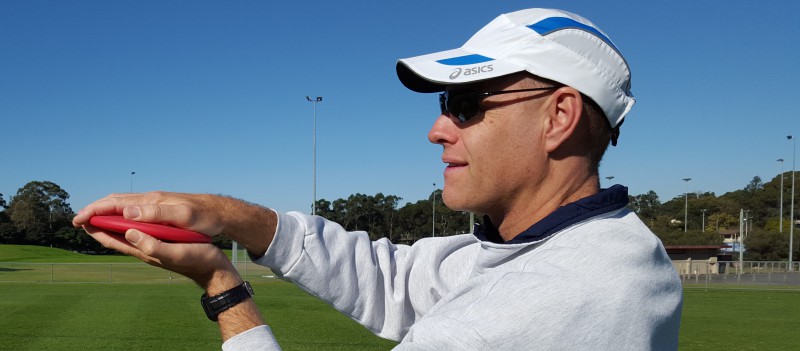8 Tips For Designing Sports Drills That Thrill
Drills – especially in sports like track and field – are traditionally seen as a coach’s “bread and butter”. They are commonly the main focus of a practise session and are often allocated the most time.
Unfortunately, in grass roots youth sports the word “drill” is rarely associated with the word “thrill”. Instead, we see too many cases of “drill overkill”. Too often, dreary drills dominate sessions.
Definition
When you look up dictionary definitions of “drill,” the word is often linked to “military” and “repetition”. To me, this evokes images of regimentation and even monotony, with little room for fun, creativity and flair.
Unfortunately, this is how kids are often fed drills. It’s not very thrilling is it? This is the opposite to the youth sport environment that we should be striving to create.
Too commonly, “drills” see young athletes robotically going through the motions – often repeatedly and sometimes without real intent. Youth sport coaches shouldn’t subject their athletes to these type of drills. In fact, it is worth questioning the need for drills at all.
Coaching The Person In Front Of You
With any activity we provide kids, we have to take into account who the person in front of us is – their physiological and psychological make-up. Dreary drills are really not “kid-friendly”. A kid’s attention span and motivation is really not well-matched with a sports program made up of these type of drills.
Do We Need Drills?
I encourage coaches to question the place and need for traditionally organised drills in their program.
Is there a purpose to the drills? Are they of any real benefit? Or are they simply routine? If a drill has no valid reasoning behind it and the kids become disengaged during it, I would get rid of it or change it and replace with something that the kids love.
If there is a perceived benefit in the drills – and drills do have their place and are at times necessary – we need to search for ways to disguise the drills in a way that excites and engages the kids, but still produces a similar effect to what we are initially are looking for.
Drills That Thrill
Drills need to be done in a way that engage the kids.
Below are some ideas and questions that may help you disguise your drills.
1. Gamify
Try to “gamify” everything. Try to put some kind of game element into everything the kids do during your session. For example, can you turn a drill into version of tag?
2. Competition
Can an element of fun competition be added to your drills? Can you introduce individual or team point scores?
3. Obstacles
Can some obstacles be included in the drill that need to be negotiated, stepped over, avoided, etc?
4. Connection
Is there a chance for the kids to team up and work together as partners or in small groups?
5. Music
Can music be used to build up the mood of the session? Can drills be done to the beat of a song? This is particularly relevant to some sprint and hurdle drills.
6. Stories
Can a story be built around the drill? For example, when the kids that I coach step over hurdles, they are never doing a “drill”; they are on a “secret mission”, trying to avoid setting off alarmed obstacles.
7. Choice
Give the kids some choice. Include them in the selection of drills. Let them choose three drills that they will do. Or add some suspense and have them take turns drawing the next drill out of a hat.
8. Distributed Drills
Distributing the drills can break up the monotony of repetition, and may even help with the learning and retention of the skills associated with the drills by maintaining attention and focus. Maybe you could break up your drills by:
- Dispersing the drills throughout the session. They don’t have all be done as one chunk.
- Doing a drill and then applying it in a game situation, before working on the next drill.
- Playing a game and then selecting a drill that will assist with the most common problem witnessed.
- Changing the order of drills, from week-to-week like the “shuffle” or “random” function on a playlist.
- Never doing the same drill multiple times, or even twice in a row. Rather than doing three repetitions of “Drill 1” then three repetitions of “Drill 2” and then three repetitions of “Drill 3”, could it look like 1, 2, 3, 1, 2, 3, 1, 2 , 3? Or even 1, 2, 3, 2, 1, 3, 1, 3, 2? Make things unpredictable. Keep the kids guressing.
Suggested Action Steps
Go away and look at some of your favourite drills. How can you “spice them up”? I would love to hear any ideas that you come up with and the effect they have on the kids and the success of the session. Let me know by leaving a comment/reply or by contacting me using the below details.
If this post helped you please take a moment to help others by sharing it on social media. If you want to learn more I encourage you to leave questions and comments or contact me directly.
Darren Wensor is a sports development professional, coach educator, specialist coach of young athletes, and founder of the blog coachingyoungathletes.com. Learn more about him here and connect with him on Twitter, Facebook, Linkedin, or via email. Check out Coaching Young Athletes on YouTube, the Coaching Young Athletes podcast, and the Coaching Young Athletes E-Book Series.


[…] How To Disguise Your Drills And Avoid Overkill […]
LikeLike